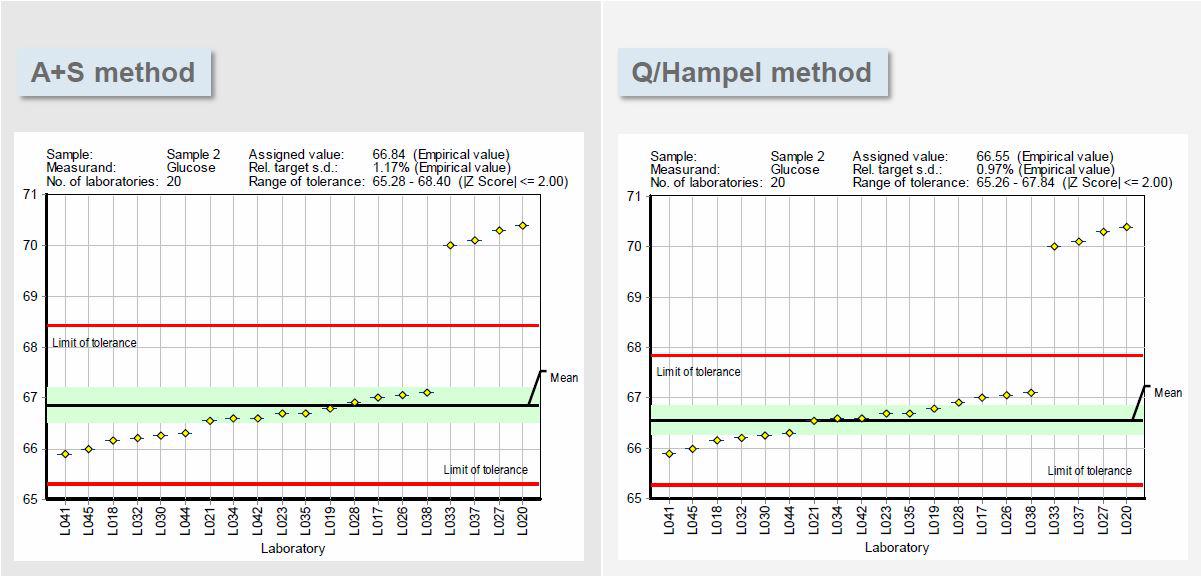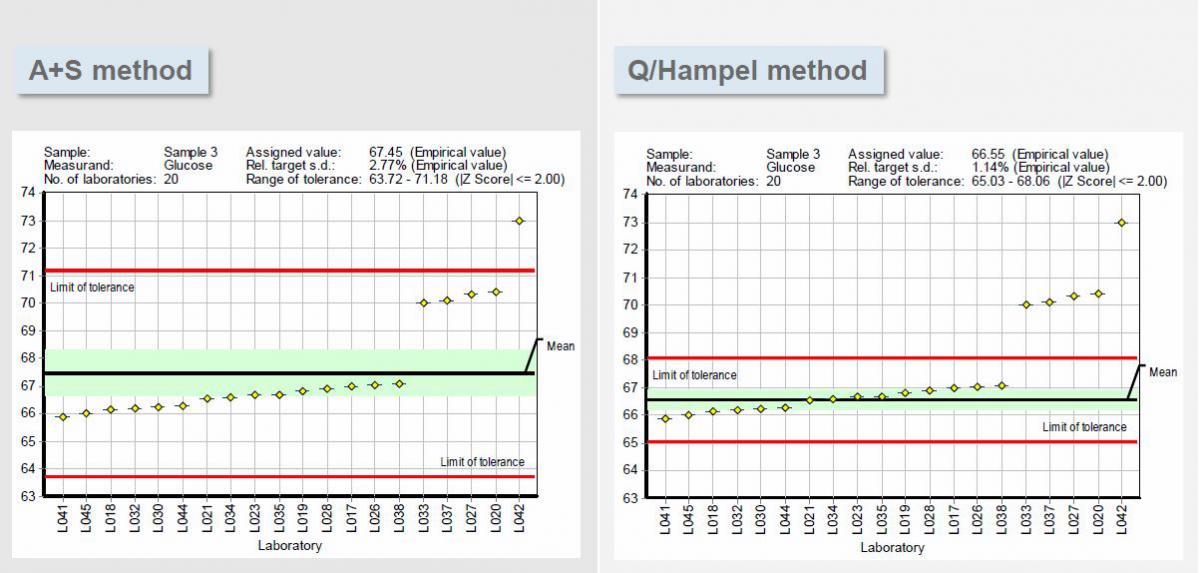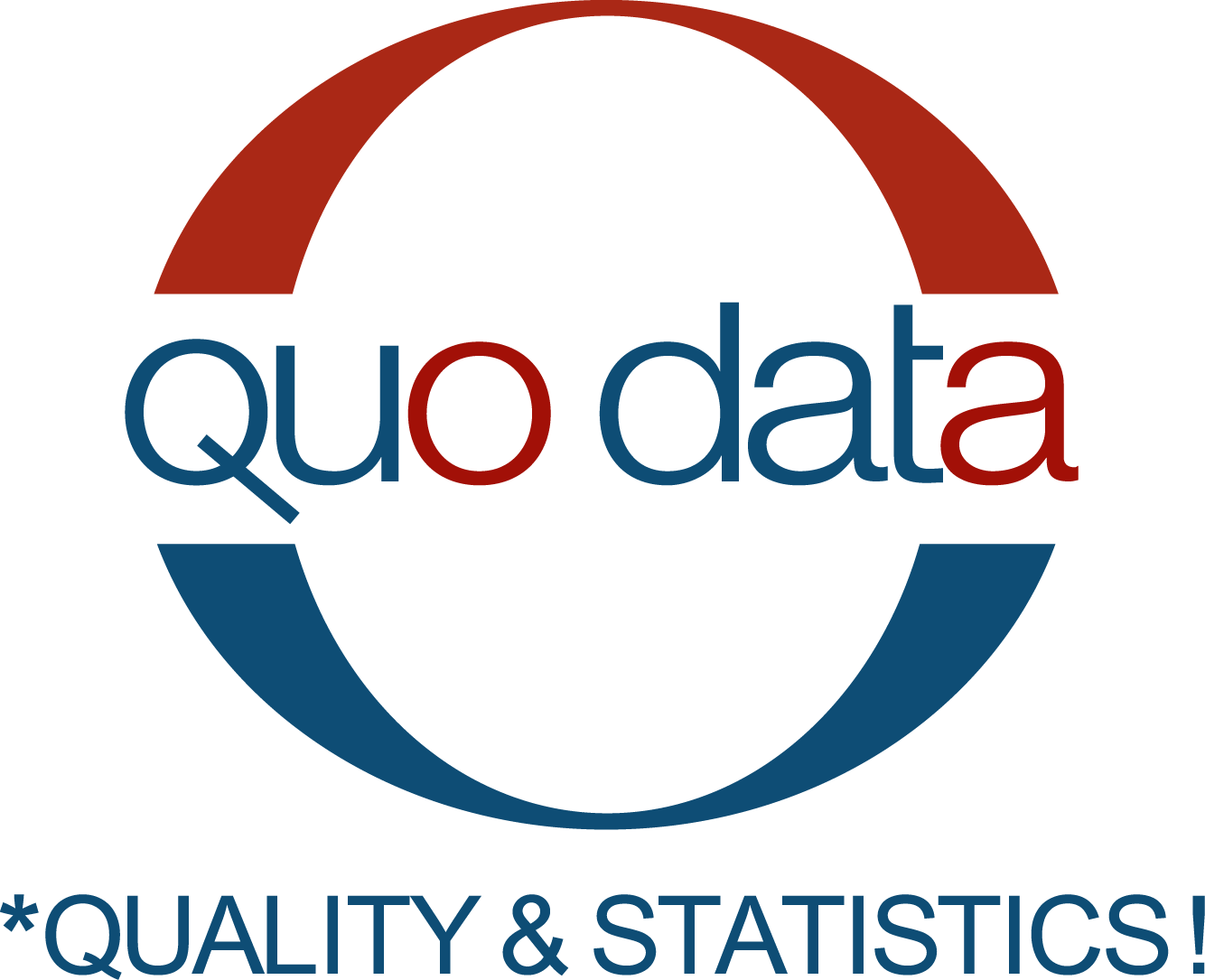Hampel Webservice Bottom Content
This service is provided by the QuoData free of charge. Please mention us on social media if you find it useful. And we're always keen to learn about your ideas.
In return, we ask you to leave us your e-mail address. This will be treated confidentially by us and will not be passed on to third parties. We will use your e-mail address to keep you up to date with news from QuoData's standardization, training and software offerings. You will receive less than 10 emails per year.
Implement Q/Hampel as a Software with PROLab
PROLab is a software family for planning, organizing, performing and analyzing interlaboratory trials - that is, for both proficiency tests assessing the performance of labs (typically acc. to ISO/IEC 13528 and ISO 17043) and collaborative studies for the validation of analytical methods (typically acc. to ISO 5725 1-6).
PROLab's conception rests on the methods described in the relevant international standards and on highly advanced mathematical-statistical tools. Statistical evaluations in PROLab are performed in accordance with the following computational standards:
- ISO 13528/ISO 5725-5 (the so-called "A+S algorithm")
- ISO 5725-2 for method validation studies
- DIN 38402 A42
- DIN 38402 A45 (Q/Hampel)
- Swiss Food Manual
- Q/Huber method
- Adaptive Horwitz function
- ISO 5725-3 for nested PT designs
PROLab is used and recommended by some of the most important PT providers worldwide, such as:
- the US Food and Drug Administration,
- the Joint Research Center of the European Commission,
- the UK Health and Safety Laboratories and
- the German Federal Office of Consumer Protection and Food Safety (BVL)
- the Integrated BioBank of Luxembourg (IBBL) which makes use of our online data entry tool.
It is also used in company-wide quality assurance programs such as at AngloAmerican
Comparison of A+S & Q/Hampel
The Q/Hampel method is much more robust than the A+S method. This means that its results are much more reliable in the presence of outliers.
Example: As you can see in the following two charts, both methods yield very similar means and limits of tolerance. Accordingly, the four outliers (labs 33, 37, 27 and 20) lie outside the tolerance limits as computed by both methods.Note how in the case of A+S, the four previously penalized outliers now lie within the tolerance limits. One single alteration is enough to throw the A+S computations off kilter, resulting in a completely different performance assessment for these four labs. In the case of Q/Hampel, however, the tolerance limits – and the mean – have barely shifted. The four previously penalized labs still lie outside the tolerance limits.
Q/Hampel has not been fooled:

Let us see what happens when we change one single lab result:

As you can see in the following two charts, lab 42 is now out on a limb, its solitary score of 73 straying far afield even compared to the 4 outlying results taken over from the previous example. Note how in the case of A+S, the four previously penalized outliers now lie within the tolerance limits. One single alteration is enough to throw the A+S computations off kilter, resulting in a completely different performance assessment for these four labs. In the case of Q/Hampel, however, the tolerance limits – and the mean – have barely shifted. The four previously penalized labs still lie outside the tolerance limits. Q/Hampel has not been fooled.
Publications on Q/Hampel
The Data Scientists of QuoData are constantly interested in improving the Q/Hampel method and other standards. For this reason we publish a large number of publications. Among other things:
Steffen Uhlig, Bertrand Colson, Petra Gowik (2018):
Taking laboratory uncertainties into account in the Hampel estimator
In: Accreditation and Quality Assurance
https://link.springer.com/article/10.1007/s00769-018-1332-x
Uhlig, Steffen (2015):
Robust estimation of between and within laboratory standard deviation with measurement results below the detection limit.
In: Journal für Verbraucherschutz und Lebensmittelsicherheit (10), S. 385–391
http://dx.doi.org/10.1007/s00003-015-0967-3
Colson, Bertrand (2014):
The Untold History of Algorithm A.
Hg. v. QuoData GmbH
https://www.quodata.de/en/algorithm-a
